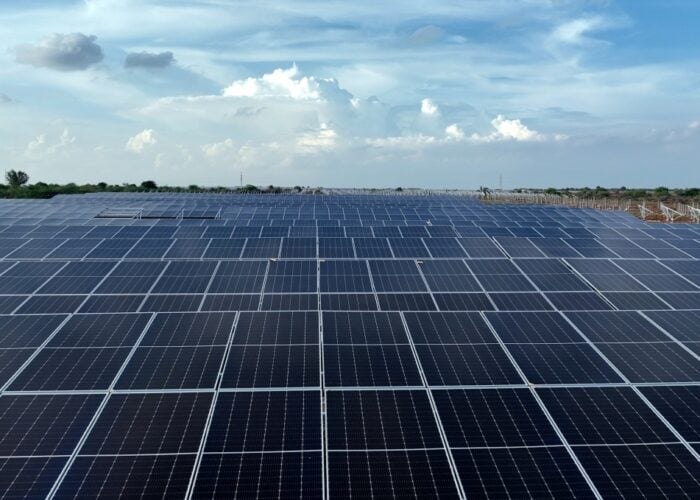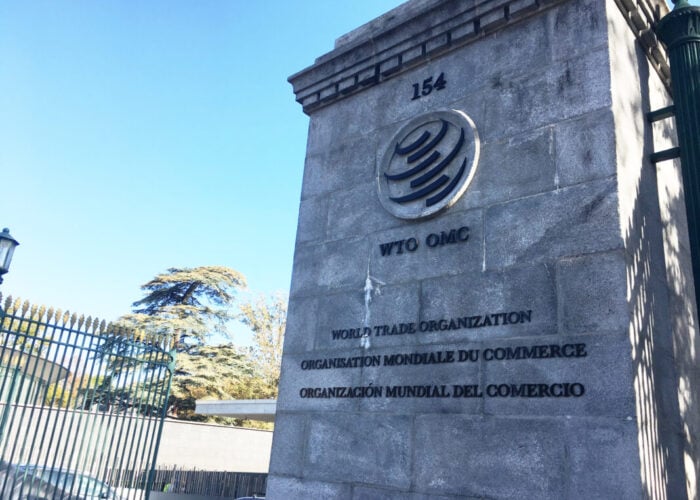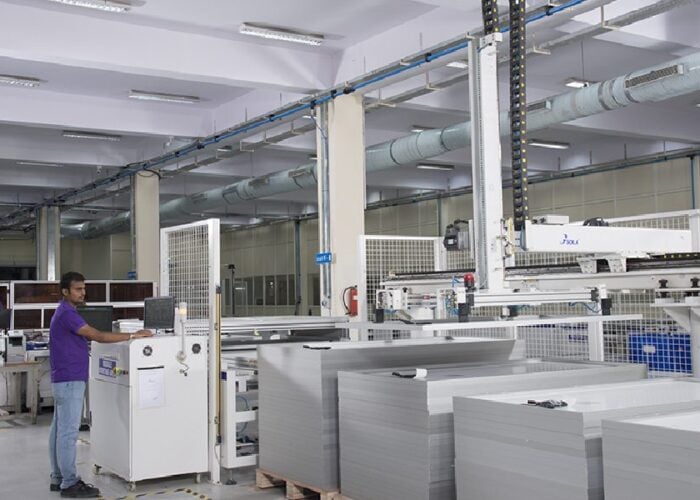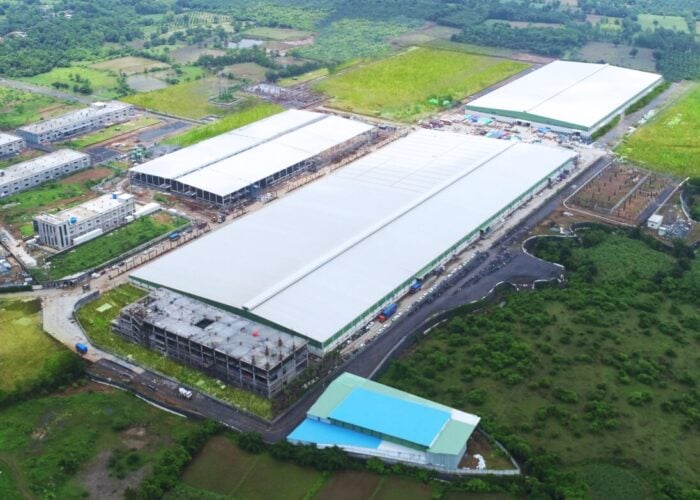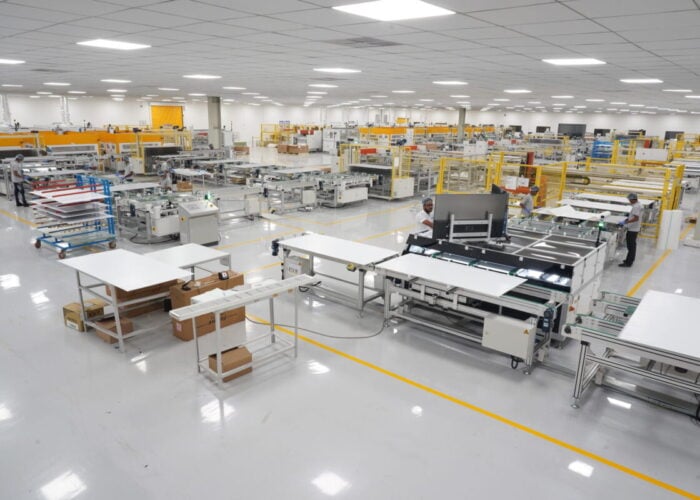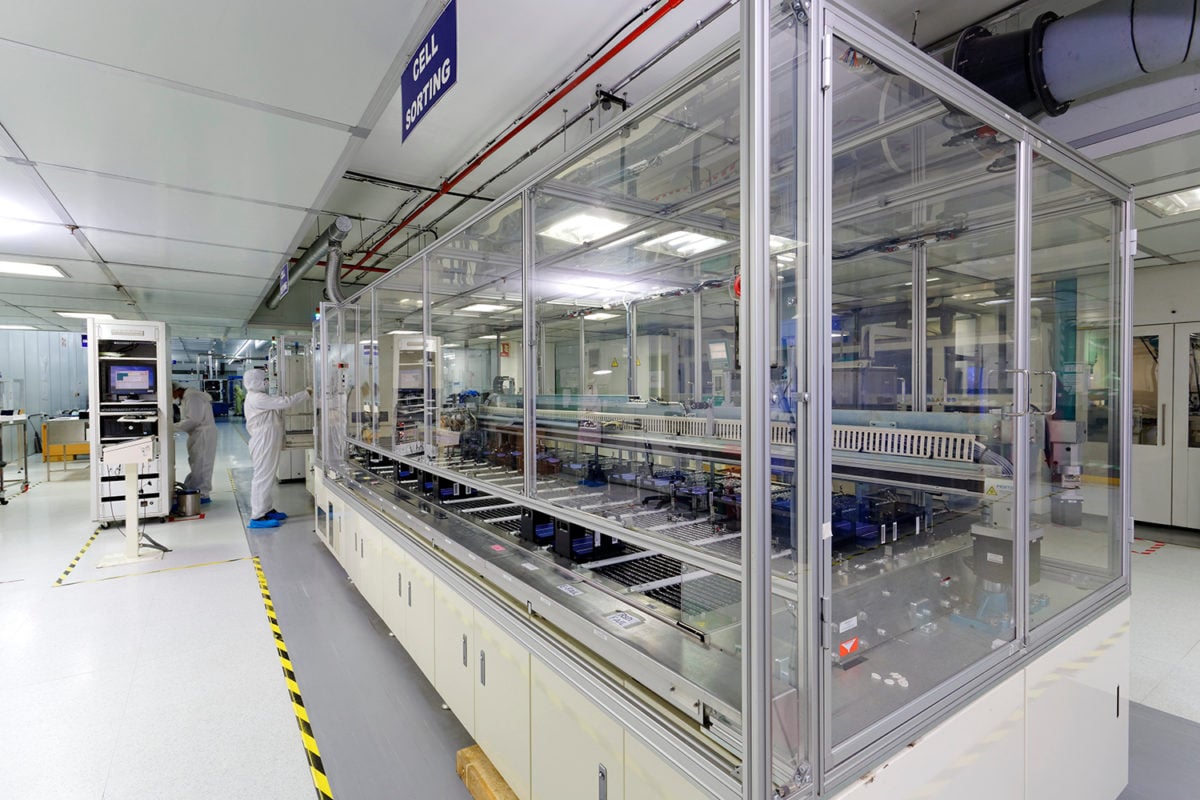
India’s unusual tender for 5GW of PV manufacturing capacity linked with 10GW of solar projects has been called many things, ranging from pioneering to fanciful, but the earliest stages have seen some of the global industry’s biggest names toss their hat in the ring.
A total of 45 companies registered their interest with the procurer, Solar Energy Corporation of India (SECI), out of which 13 submissions came from heavyweight international firms.
Try Premium for just $1
- Full premium access for the first month at only $1
- Converts to an annual rate after 30 days unless cancelled
- Cancel anytime during the trial period
Premium Benefits
- Expert industry analysis and interviews
- Digital access to PV Tech Power journal
- Exclusive event discounts
Or get the full Premium subscription right away
Or continue reading this article for free
Speaking to PV Tech at an Intersolar Europe forum in Munich last week, Jatindra Nath Swain, SECI’s managing director, said that among the potential tender participants were China-based Trina Solar, GCL, and LONGi, as well as Indian conglomerate Adani.
PV Tech is also aware that China’s Risen, Japan’s Softbank as well as India’s ReNew Power, Vikram Solar and Waaree Energies are also among those that got involved.
The tender stipulates that players must bid for a minimum of 1GW manufacturing capacity combined with 2GW of PV projects, which means that many companies, that may only have an expertise in one of the upstream or downstream segments, will have to form a joint venture to balance out their capabilities to suit the tender.
The China effect
When asked if China’s recent solar policy overhaul, which dramatically curtailed solar deployment quotas within China, would negatively impact interest in the 5GW Indian manufacturing tender, Nath Swain said that in the short-term, global module prices will come down, but the news will also see Chinese companies opening their eyes even more to opportunities abroad. In fact the president of LONGi Solar told PV Tech last week that Chinese companies “must” look away from the domestic market and find new opportunities overseas as a new era of consolidation in China’s manufacturing space looms.
Nath Swain also said that foreign companies that supply modules to India will still be considering the threat of the Indian government potentially bringing in a safeguard or anti-dumping duty against solar cell imports and that will continue to encourage these manufacturers to set up shop within India.
He also confidently described “increasing mobility” in the international solar industry, perhaps setting the tone for more manufacturers to take seriously the idea of domestic manufacturing in India. His comments come after a range of such announcements, including ground breaking on a 200MW cell manufacturing facility in Andhra Pradesh from Chinese firm CETC.
How serious?
Nath Swain noted that the expression of interest (EoI) stage of SECI’s 5GW manufacturing tender is only preliminary and that the true seriousness of players will likely come out in the pre-bid meeting. One such meeting was due to take place last week, but following requests, SECI has scheduled a second pre-bid meeting for 2 July in New Delhi.
Some had doubts that the tender could ever go ahead and many are convinced that there will be a delay in the process, but the secretary of the Ministry of New and Renewable Energy (MNRE) Anand Kumar also told PV Tech that the tender will be opened in July.
Consultancy firm Bridge to India has already expressed its views on the barriers to entry for this tender:
“We believe that few players have the willingness and capacity to participate in a tender of this scale/complexity. Combined capital cost of a 1GW manufacturing line and 2GW projects is estimated in excess of INR110 billion (US$1.6 billion). Minimum net worth requirement for bidders is INR20.4 billion (US$300 million). Our list of potential candidates is limited to ReNew, Adani, Softbank and Tata Power.”
Manufacturers’ views
Ryan Wang, marketing and sales director at GCL System Integration Technology, told PV Tech that GCL is in discussions with several local Indian firms and other international firms about the potential of setting up a joint venture to bid into the tender.
Back in April, it was announced that Softbank Vision Fund (SBVF) and GCL Group holding company had signed a memorandum of understanding (MoU) to launch a US$930 million joint venture in the Indian state of Andhra Pradesh, primarily to manufacture PV ingots, wafers, solar cells and modules.
Wang said the Indian government has been “aggressively” trying to promote domestic PV manufacturing via its ‘Make in India’ programme as a long-term strategy.
Even if no safeguard or anti-dumping duty was brought in by the Indian authorities, Wang said that India would still be an attractive location to set up manufacturing. He also cited the 5GW/10GW tender parameters that allow the project developers to use any module – not just those produced in India – as a bonus. For example, modules produced domestically by the new fabs could be exported to the likes of Europe and the US, he said.
Power minister R.K. Singh also this week reportedly announced plans for all future renewable energy project bids to have at least a 50% component of manufacturing. The Ministry of New and Renewable Energy (MNRE) is also playing with the idea of a 100GW solar project tender to be linked with manufacturing – another announcement that has baffled analysts.
All the signs are clear that the Indian government means business for domestic manufacturing. However, Bridge to India has again put out a cautious note following the policy makers’ flurry of massive Gigawatt-level announcements of late:
“MNRE has been under persistent pressure over the last year due to a series of issues including tender slowdown, GST, customs duties and safeguard duties. We can only speculate that the new MNRE administration is trying to deflect attention from these problems to shore up confidence and raise optimism in the sector.”
Changing mind-sets
Sunil Rathi, director, sales and marketing at Indian module manufacturer Waaree Energies, said foreign investors have shown a lot of interest in forming JVs for the tender, but he expects some delay in proceedings.
Remarking on the effect of China’s solar cuts on module ASPs, he added: “There is a down trade in the prices but I think this may be a short time. […] It’s likely to stabilise in probably 3-6 months’ time. But yes, currently there is a lot of distress happening.”
While noting that India’s domestic manufacturers receive few incentives apart from M-SIPS, a form of government sop for electronics manufacturing, Rathi did claim that Waaree is seeing change in the mind-set of developers who are willing to use domestic panels as long as they are competitive. Bridge to India’s latest Solar Map, however, reported that Indian players accounted for a paltry 11.42% market share for module supply in the Indian solar market during FY17/18.
Rathi suggested that the size of the new manufacturing tender would bring economies of scale and the ensuing cost reductions would help the business case for module supply within India.
Japanese giant Softbank, for its part, has been widely reported to have multi-billion dollar investment plans for both upstream and downstream projects in India and is in talks with the Indian government and the likes of GCL. The company has made wildly ambitious announcements in the past, but has certainly made its mark on the Indian industry already – regardless of its original investment targets back in 2015.
Back then, there were several huge announcements from Chinese solar firms, such as JA Solar and Trina Solar, planning to set up manufacturing in India, but of these memorandums of understanding only that of Indian conglomerate Adani came to fruition.
Some claim that the ease of doing business – or lack of – in India could also be a drawback.
For example, Gyanesh Chaudhary, MD and CEO, of Indian PV manufacturer Vikram Solar, warned: “The way it’s challenging for global companies to set up shop in China and survive, the same way it’s challenging for Chinese companies to set up shop in India and survive. It’s a very cultural thing. It’s more about how business is done. Nothing wrong China way or India way, but it’s just different.”
Meanwhile, Frank Wang, CEO, of major China-based PV module manufacturer Risen Energy, which entered PV Tech’s Top 10 module manufacturer’s rankings for the first time in 2017, said that without a safeguard duty in India, using Indian-made modules will force projects to have higher tariffs in their power purchase agreements (PPAs) than if they used Chinese-made panels.
Higher tariffs will be a concern in such a cost-sensitive industry and geography, particularly given the tendency of Indian state Distribution Companies (Discoms) to throw tantrums when lower solar tariffs are discovered in other states.
A better eco-system
For the 10GW of solar projects in the tender, there will be a maximum tariff of INR2.93/kWh for 25 years.
All major raw materials, other than polysilicon, for manufacturing have to be sourced locally. There will also be stiff final and intermediate deadlines for the various project completions.
Mudit Jain, consultant at Bridge to India, said: “In all probability, developers will find it hard to use their own manufactured product for these [solar] projects. The gestation time for setting up such manufacturing facilities including land and activity will take [a] minimum of two years plus.
“We have been saying it for quite some time that for developing manufacturing, we need a better eco-system rather than the protectionist measures, but this policy overall is meant in the direction of creating an eco-system despite not providing the sufficient infrastructure from the government side.”
Jain said the 10GW of PV projects would have been tendered anyway even without the manufacturing link, so a “point to ponder” is where these manufacturers of new module capacity will sell their product once the 10GW of projects have been fulfilled.
With all the factors above in mind, nobody can doubt India's desire for a holistic PV industry. But there is a long way to go with this tender before one can be sure the pull factors are strong enough for genuine progress. China's current ability to produce modules at significantly lower cost than most product coming out of India will remain a key thorn in the side of the 'Make in India' dream.

